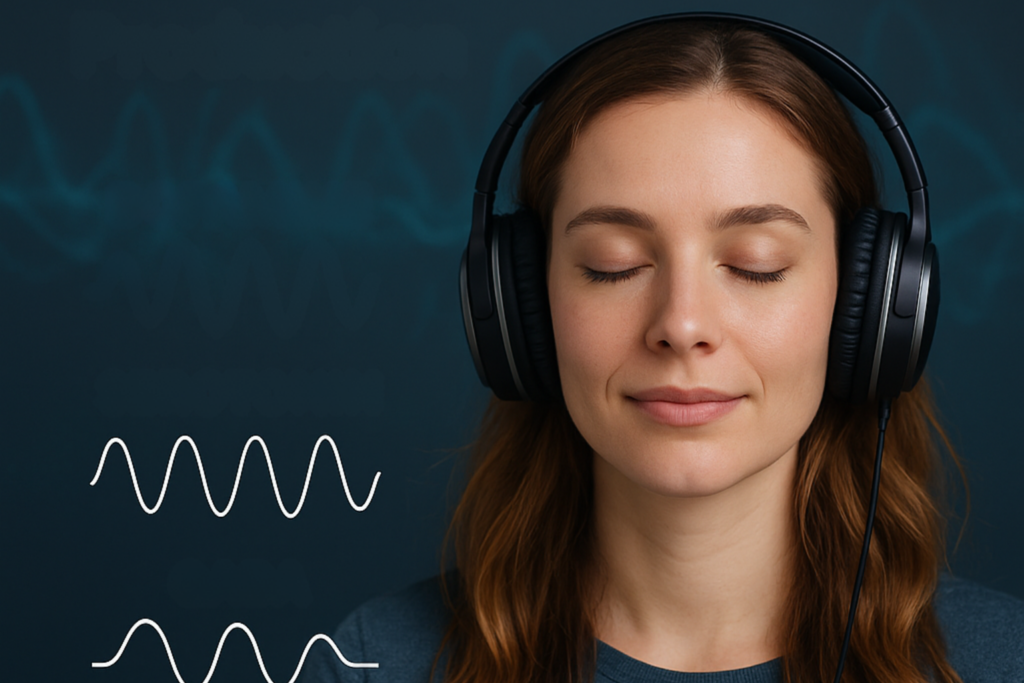You’ve likely heard that music can lift your mood—but did you know that specific sound frequencies can actually change your brain chemistry? That’s right—sound doesn’t just soothe you; it can help stimulate the release of neurotransmitters responsible for your happiness, motivation, relaxation, and focus.
In this article, we’ll explore how therapeutic sound impacts your brain at the chemical level, which neurotransmitters are most affected, and how to use frequency and rhythm as tools for emotional and mental optimization.
What Are Neurotransmitters?
Neurotransmitters are chemical messengers that transmit signals between neurons in the brain. They regulate everything from your mood to your energy levels and emotional balance.
Key neurotransmitters include:
- Dopamine: Motivation, pleasure, reward
- Serotonin: Mood regulation, well-being
- GABA: Calm, relaxation, stress relief
- Endorphins: Pain relief, euphoria
- Oxytocin: Bonding, trust, emotional safety
- Melatonin: Sleep regulation
- Acetylcholine: Focus, learning, memory
When these chemicals are imbalanced, you may experience anxiety, low energy, brain fog, or emotional instability.
How Sound Influences Neurotransmitter Release
Sound doesn’t just enter your ears—it travels through your nervous system and vibrates your cells, especially in the brain, heart, and gut.
Here are a few ways it influences neurotransmitter activity:
1. Entrainment Into Brainwave States That Promote Neurochemical Balance
- Alpha waves (8–12 Hz): boost serotonin and GABA
- Theta waves (4–8 Hz): support dopamine release and emotional access
- Delta waves (0.5–4 Hz): linked to melatonin production and deep healing
- Gamma waves (30+ Hz): associated with insight and peak cognitive function
Using binaural beats or Solfeggio frequencies can gently guide your brain into these states, triggering the corresponding chemical shifts.
2. Frequency-Based Vagus Nerve Stimulation
The vagus nerve connects the brain to the gut and heart, where many neurotransmitters are also produced. Toning, humming, or using sound therapy stimulates the vagus nerve, which leads to:
- Decreased cortisol (stress hormone)
- Increased GABA (calming neurotransmitter)
- Improved parasympathetic activity for mood regulation
3. Emotional Activation Through Musical Resonance
Certain sounds and frequencies elicit emotional resonance, which triggers the brain to release reward chemicals. You may notice this during:
- Emotional music that brings tears or chills
- Chanting or mantra meditation
- Sound baths with crystal singing bowls
- Listening to 528Hz or 432Hz music during reflection or breathwork
Emotion + sound = chemical transformation.
Key Frequencies for Neurotransmitter Boost
- 528Hz – DNA repair, love, increased serotonin
- 432Hz – Peace, emotional balance, alpha brainwaves
- 396Hz – Releasing fear and guilt (may boost dopamine through relief)
- 741Hz – Detoxification and clarity, supports acetylcholine
- 963Hz – Pineal gland activation, spiritual elevation, increases inner insight (linked to gamma states)
- Binaural beats – Alpha and theta entrainment for relaxation and emotional healing
A.V.E.® and R.A.E.® Methods: Enhancing Brain Chemistry
These integrative techniques combine:
- Sound journeys
- Emotional affirmations
- Targeted breathwork
- Brainwave entrainment
They help balance your mental-emotional system and stimulate neurotransmitter release by aligning sound, thought, and intention. These methods are particularly helpful for anxiety, low mood, or mental fatigue.
Practical Routine to Boost Neurotransmitters Using Sound
Try this 10-minute daily sequence:
Morning: Dopamine and Serotonin Boost
- Play 432Hz or alpha-wave track
- Stand or sit in sunlight (supports serotonin production)
- Breathe deeply and visualize 1 thing you’re excited about
- Repeat: “I’m supported and energized by life.”
Midday: Calm and Focus with GABA
- Listen to 528Hz while doing a repetitive task
- Hum or tone gently for 2–3 minutes
- Sip calming tea (e.g., chamomile) to support GABA synergy
Evening: Melatonin and Oxytocin Release
- Use delta wave sound or a 963Hz meditation
- Journal about a loving or grateful moment
- Do 2–3 minutes of slow “OM” chanting or vagus breathing
Science-Backed Benefits of Sound-Induced Neurochemical Shifts
- A 2016 study in Frontiers in Human Neuroscience showed that binaural beats increase alpha activity and relaxation
- Another study in Psychology of Music found that therapeutic music reduced cortisol while increasing dopamine and endorphin levels
- Sound-based vagal stimulation has been shown to reduce symptoms of depression, PTSD, and chronic anxiety
Final Insight: Your Brain Is Tuned by Vibration
Your emotions, clarity, and energy levels are not just mental—they’re chemical and electrical. And sound is one of the most natural, elegant tools to influence both.
So if you’re tired, foggy, sad, or overwhelmed—try tuning in, not powering through.
Because every breath, tone, and frequency you choose can rewire your chemistry—and help you return to balance.
